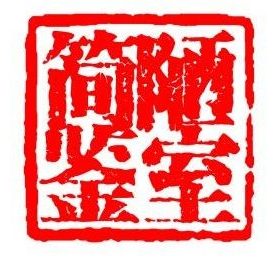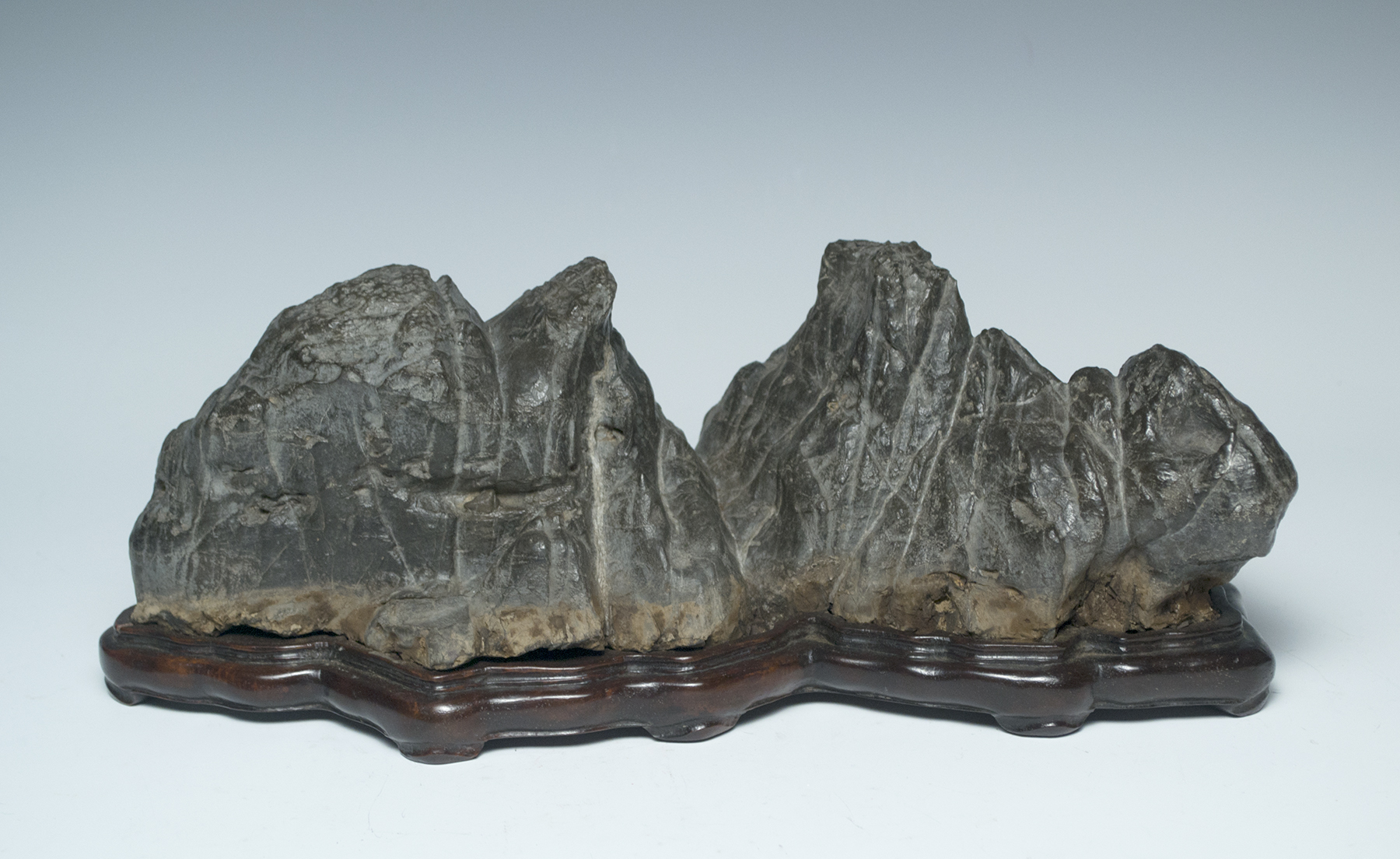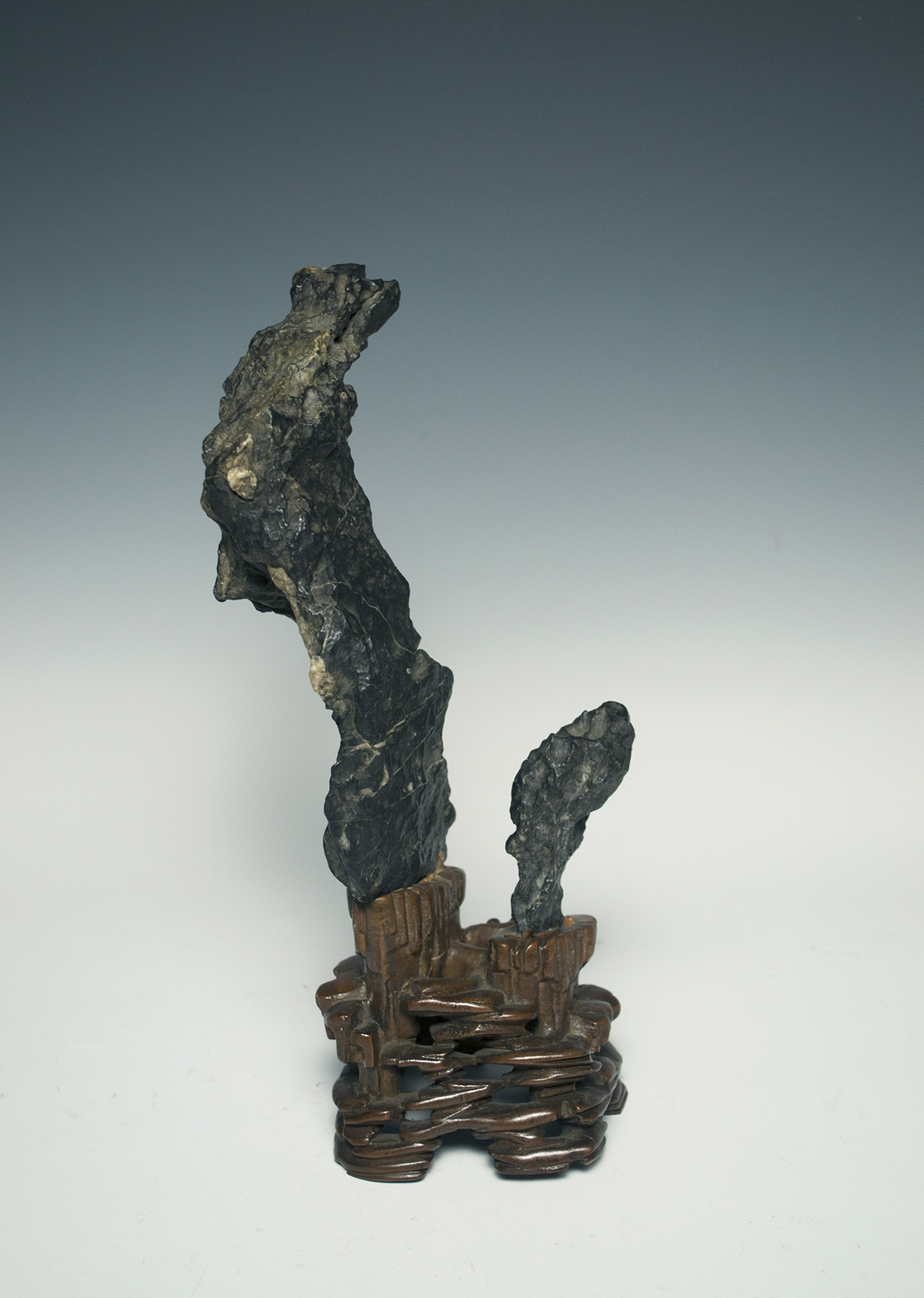Scholar’s Rocks
Scholar’s rocks first emerged during the Tang Dynasty (618-906) and were common in the studios of rulers and intellectuals throughout Chinese history. With the increasing influence of Daoism, the aristocrats and educated elites of the era began to have a greater appreciation of the natural world and landscape art in all forms. Large gardens emerged throughout China that served as both a representation of wealth and source of inspiration. Within these gardens, literati often built their studios in which they kept personal objects for artistic, meditative or decorative purposes. One such object, the scholar’s rock, was viewed as a microcosm of the universe.
These objects were appreciated for their ability to capture nature’s essence, especially qi 氣, the universal energy of things. The value of rocks was based on four essential qualities: thinness, openness, perforations and wrinkling. These characteristics were rooted in the rock’s resemblance to nature. While most of these rocks were made out of limestone, some were petrified wood, which was considered as a rarer stone. These rocks were found in caves around Yingde and Lingbi, but the most prized specimens hailed from Lake Tai. The twisting, unnatural stones are the result of natural water erosion or calcification. Although purported to be natural, many of the rocks were enhanced through minor polishing and sanding. The beauty and uniqueness of these stones is unparalleled, which has seen them persist for the past sixteen hundred years and remain popular to this day.
If you would like to listen rather than read, please click below.
Click and drag to view the image in 3D



